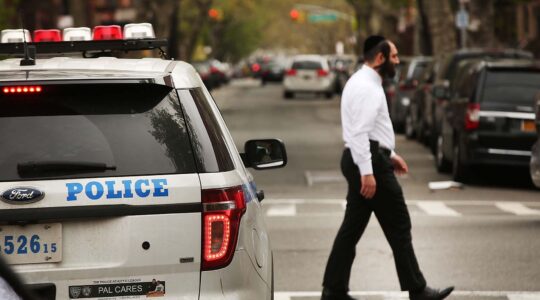For 24 hours this week, the Cambria Heights neighborhood of Queens became one of New York City’s biggest Jewish areas.Some 50,000 Jews visited the neighborhood on Tuesday.
That day — Tammuz 3 on the Hebrew calendar — was the 13th yahrtzeit of the late Rabbi Menachem Mendel Schneerson, the seventh and last rebbe of the Chabad-Lubavitch chasidic movement.
Buried next to Rabbi Yosef Schneersohn, his predecessor and cousin, Rabbi Schneerson is interred in a covered plot of the Old Montefiore Cemetery, the Ohel, which has become a pilgrimage site since 1994.
The gravesite of Rabbi Schneerson is open 24 hours a day; on his yahrzeit, it is especially crowded.
“The crowds keep growing every year,” Rabbi Zalman Shmotkin, a Lubavitch spokesman, says of the annual yahrtzeit commemorations. This year, the separate lines of men and women, six-to-seven people deep, stretched “a good couple blocks” outside the cemetery, the rabbi says.
At 2:30 a.m. the waiting time was three hours.
Rabbi Abba Refson, Chabad representative to the Ohel, arranged the logistics. “The nature of the experience is very private,” he says.
This week’s pilgrims included Orthodox Jews, non-Orthodox Jews and non-Jews. They prayed, recited Psalms, studied Torah, collected tzedakah and left petitions — “hundreds of thousands, in every language conceivable” — written on small pieces of paper at the gravesite for health or marriage or other personal needs.
The rebbe’s 13th yahrtzeit, reflecting the year when a Jewish boy becomes bar mitzvah, holds a special significance, Rabbi Shmotkin says. “It’s definitely a time to reflect on how we matured and whether we have lived up to what we know what the rebbe’s expectations of us are.
“The overwhelming atmosphere is not one of mourning,” Rabbi Shmotkin says. “The rebbe’s resting place is not a place for sadness — it’s a place for resolution and stocktaking, for recommitment.”
The New York Jewish Week brings you the stories behind the headlines, keeping you connected to Jewish life in New York. Help sustain the reporting you trust by donating today.




